Nothing is better than spending your summer on the shores of one of America’s Great Lakes. But, while people generally flock to Lake Superior or Lake Michigan, many don’t know that Lake Huron also has a lot to offer. It is the second largest of the Great Lakes and borders Ontario, Canada, and Michigan. In fact, it is the third-largest freshwater lake in the world. But just how deep is Lake Huron? Discover everything you need to know about this beautiful lake below.
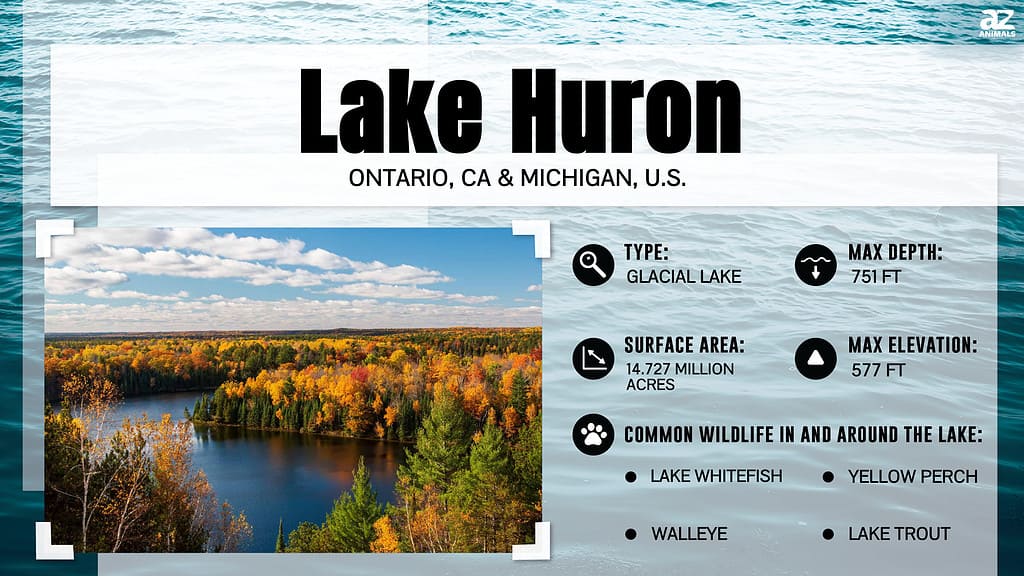
What Is The Depth And Maximum Capacity Of Lake Huron?
With 850 cubic miles of water, Lake Huron is the third-biggest freshwater lake by volume. Its lakeshore extends up to 3,827 miles and is notorious for the rocky shores of Georgian Bay and its shallow, sandy beaches. The lake measures 183 miles from north to south and 206 miles across. The average depth of Lake Huron is 195 feet. However, its maximum depth is approximately 751 feet.
Compared to other Great Lakes, Lake Huron’s drainage area is relatively large, covering parts of Michigan and Ontario. Furthermore, Lake Huron is connected to Lake Michigan by the wide Straits of Mackinac.

In Lake Huron at Tobermory, there is an old sunken ship.
©Kibrok Photography/Shutterstock.com
Where Is Lake Huron?
This Great Lake is located between Lake Superior and Lake Michigan to the northwest and Lake Erie to the south. In fact, it is the lake that surrounds Michigan, giving it its mitten shape.
Which Rivers And Tributaries Feed Lake Huron?
Lake Huron’s major tributaries on the Michigan side include the Saginaw and Au Sable Rivers. However, the Saginaw River obtains water from multiple tributaries, with many becoming dammed behind the Port Huron moraine. As a result, the Saginaw River overtops a shallow spot in the moraine, causing it to flow into Saginaw Bay. However, the base flow streams of the sandy uplands farther north, like the Au Sable. It provides a steady flow of cold, clear water into Lake Huron.
What Is Lake Huron’s Water Used For?
Lake Huron provides water for recreation, drinking, livelihoods, and food to around three million people in the United States and Canada combined. Additionally, it supplies water to about 1.4 million people in the Canadian city of Ontario. Lastly, it provides water and food to the rare and endangered animal and plant species found in or surrounding the lake.
Why Is Lake Huron So Popular?
While Lake Huron tends to be the forgotten lake, visitors will soon discover long, breathtaking shorelines and 30,000 islands. Furthermore, there are plenty of beaches for guests to enjoy, so if you are looking for somewhere to play or relax, give this Great Lake a try. However, one of the best things about the beaches on Lake Huron is they are not crowded, so if you are looking for some privacy, this is the lake for you.
Lake Huron Recreation
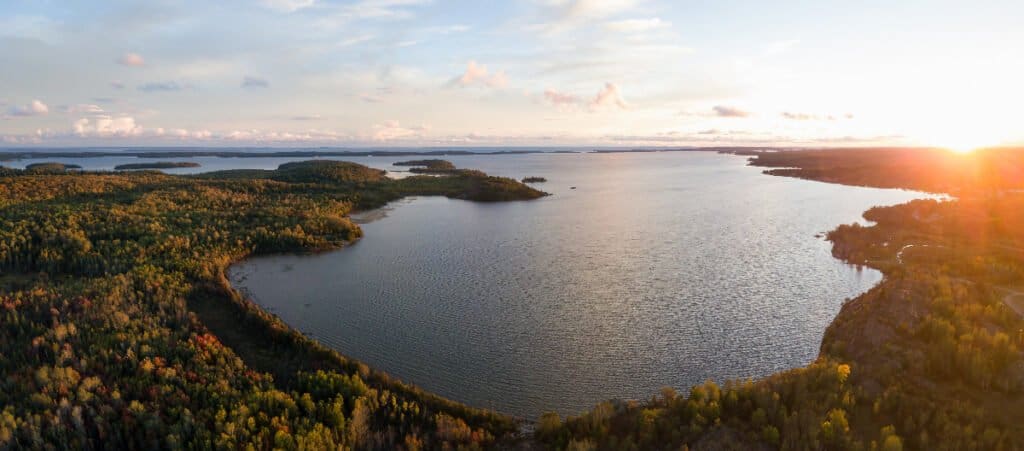
Lake Huron provides countless opportunities for outdoor recreation.
©EB Adventure Photography/Shutterstock.com
Due to its size, there are multiple outdoor recreational activities available at Lake Huron. So if you are looking for a place to interact with nature and enjoy everything the outdoors offers, this Great Lake is the perfect solution. Recreational activities include:
- Adventure Cruising
- Bodyboarding
- Camping
- Canoeing
- Cycling
- eBiking
- Hiking
- Ice Climbing
- Kayaking
- Kitesurfing
- Mountain Biking
- Multi-Activity
- Power Boating
- Rafting
- Rock Climbing
- Safari
- Sailing
- Scuba Diving
- Skiing
- Skydiving
- Snorkeling
- Snowboarding
- Snowkiting
- Snowmobiling
- Surfing
- Trekking
- Wakeboarding
- Walking
- Water Skiing
- Windsurfing
- Yacht Charter
Wildlife
Many wildlife species depend on the Great Lakes for drinking water and food. Therefore, Lake Huron is home to some of the most spectacular animals in the United States, including:
Round Whitefish
While round whitefish are most abundant in Alaska, they also occur throughout the United States. They inhabit the Great Lakes, including Lake Michigan, Lake Huron, Lake Superior, and Lake Ontario. Furthermore, they have large populations in northeast regions of the U.S., like New Hampshire, New York, and Maine.
Walleye
If you want to catch walleye on Lake Huron, Saginaw Bay is the perfect spot for sinking a line. They occur in this lake year-round, but they tend to be more active during the summer months. However, ice fishing on this lake during the winter is also a great experience. People find the most success by jigging with a wax worm.
But, if you are looking for a trophy-sized catch, the biggest walleyes occur in Tawas Bay. Since Lake Huron has such excellent game qualities, it’s inundated with anglers trying to catch walleyes and several other fish species throughout the year.
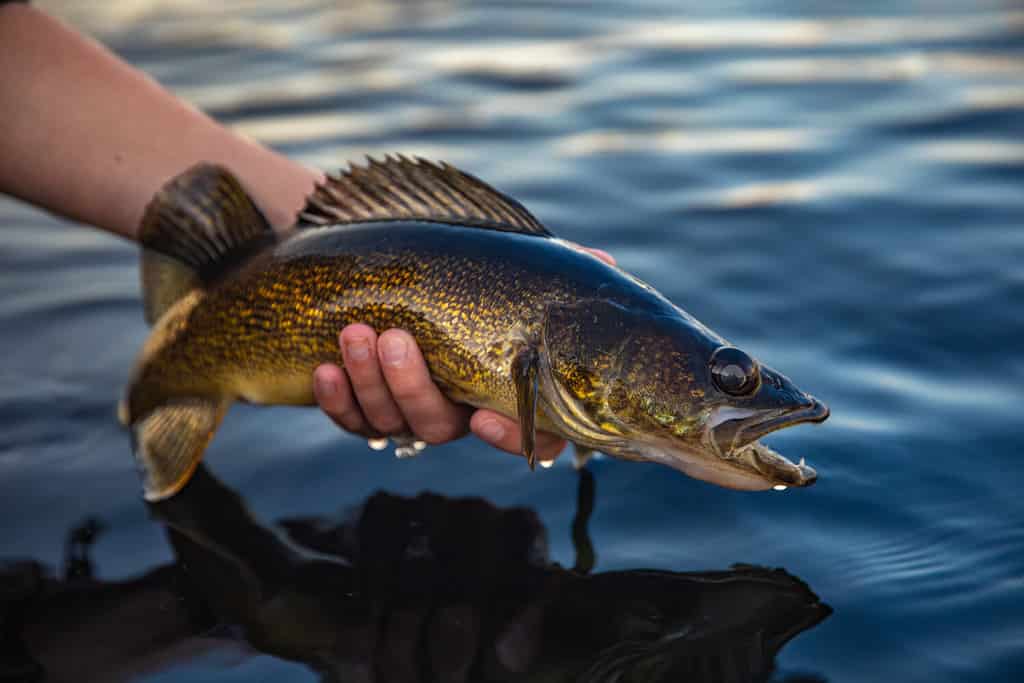
If you want to catch walleye on Lake Huron, Saginaw Bay is the perfect spot for sinking a line.
©Harlan Schwartz/Shutterstock.com
Common Snapping Turtle
The common snapping turtle is an important part of Lake Huron’s ecosystems. They eat the dead fish and create channels through vegetation that amphibians and fish utilize by consuming large amounts of vegetation, reducing plant biomass. They also play a vital role in transferring nutrients from water to land. Sadly, their hatchlings also serve as an important food source for:
- Skunks
- Raccoons
- Foxes
- Opossums
- Coyotes
The presence of snapping turtles is a sign of a healthy ecosystem, which is beneficial not only to the fauna and flora but also to humans.
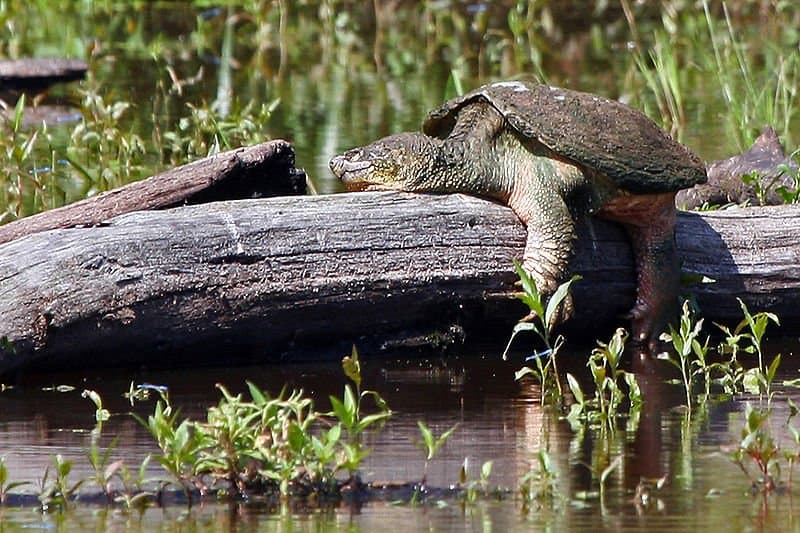
The presence of snapping turtles is a sign of a healthy ecosystem, which is beneficial not only to the fauna and flora but also to humans.
©https://www.flickr.com/people/sherseydc/, CC BY 2.0, via Wikimedia Commons – License
River Otter
The river otter inhabits freshwater brackish waters like streams, marshes, and lakes. They take over abandoned dens belonging to other animals or build their own in a natural hollow near the water or on riverbanks. However, these aquatic creatures don’t stay in one local waterway for more than one to two days at a time. Instead, their territories range over as much as 50 miles. River otters are most active during dawn and dusk.
River otters hunt for most of their food in the water. Their diet consists of:
- Fish
- Amphibians
- Crayfish
- Turtles
- Crabs
- Birds
- Aquatic plants
- Eggs
- Small land mammals
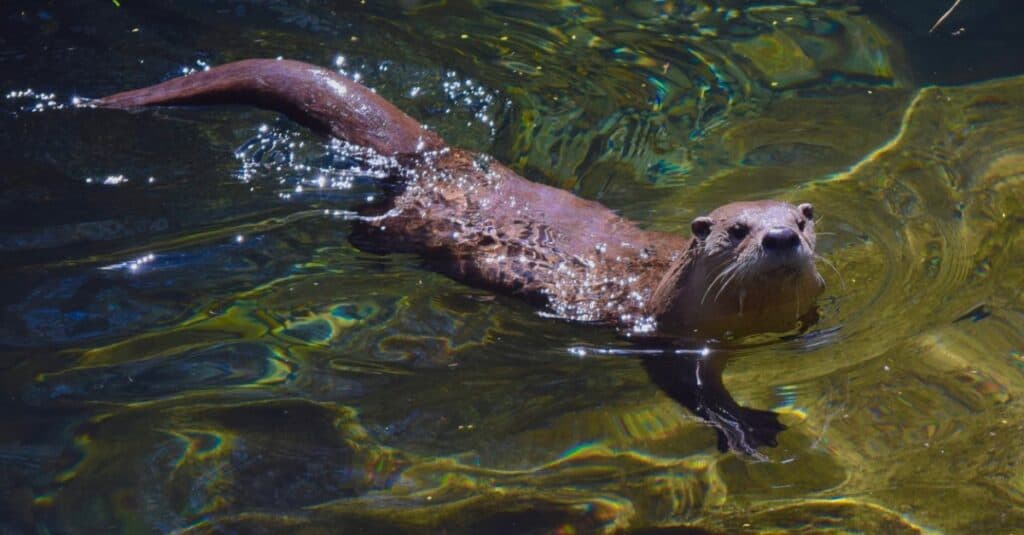
The river otter inhabits freshwater brackish waters like streams, marshes, and lakes. They take over abandoned dens belonging to other animals or build their own in a natural hollow near the water or on the riverbank.
©iStock.com/Kathryn Farley
Great Blue Heron
The Great blue heron is the largest heron in the United States and is found throughout the country. These magnificent birds are often seen standing silently along lakeshores or inland rivers. Their wings beat slowly when they fly, with their heads hunched between their shoulders. These birds are highly adaptable since they thrive in all kinds of environments, from desert rivers to subtropical mangrove swamps to the coastlines of Alaska. Since they are so versatile and their diet varies widely, they are able to spend winters farther north than other heron species. Sometimes they appear in areas where the water is so cold it’s mostly frozen.
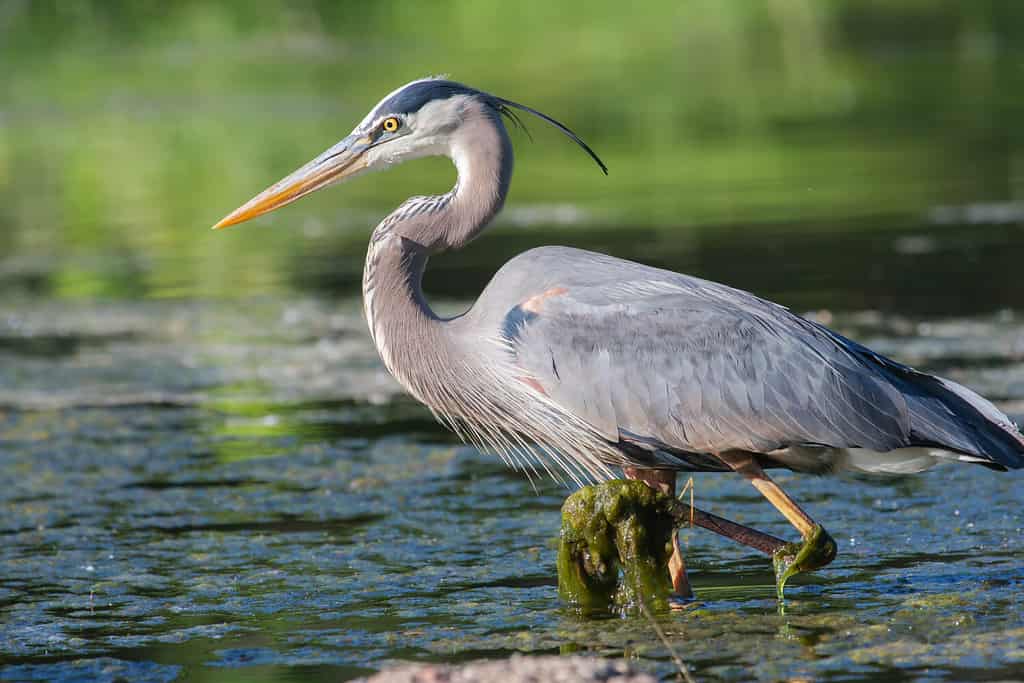
The Great blue heron is the largest heron in the United States and is found throughout the country.
©Joseph Scott Photography/Shutterstock.com
What’s So Special About The Lake Huron Eco-System?
This Great Lake is home to a wide variety of birds, fish, mammals, and plant species. Additionally, it is one of few lakes that have maintained much of its wild state, unlike other more urbanized southern lakes. Over 60% of the lake’s watershed, including the Carolinian forests, is forested. In fact, these susceptible forests and their broadleaf deciduous trees are a sight to behold, as they are rare beauties. This is especially true during the Fall when the leaves begin to change to vibrant yellows, oranges, and reds.
Furthermore, as mentioned above, Lake Huron is home to spectacular beaches, some reaching 8 miles long. Many of these beaches are created from rare and fragile sand dune systems. In addition, these dunes create habitats for many rare animals and plant species, including the five-lined skink, blue heats flower, and Huron grasshopper.
The photo featured at the top of this post is © iStock.com/Paul Massie Photography
Thank you for reading! Have some feedback for us? Contact the AZ Animals editorial team.






